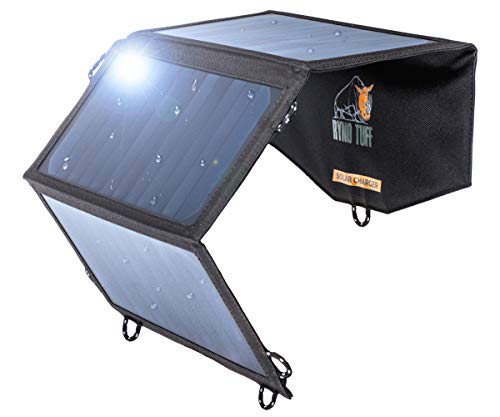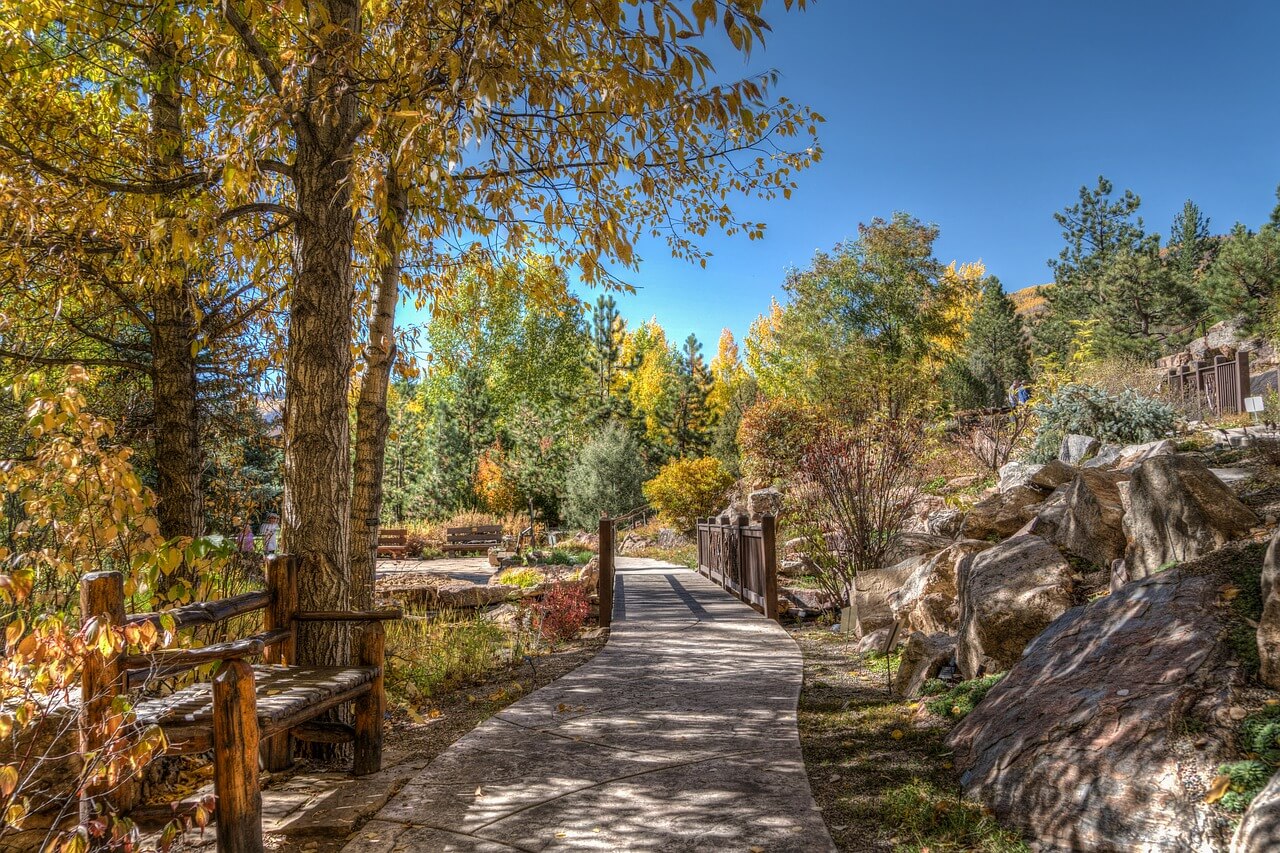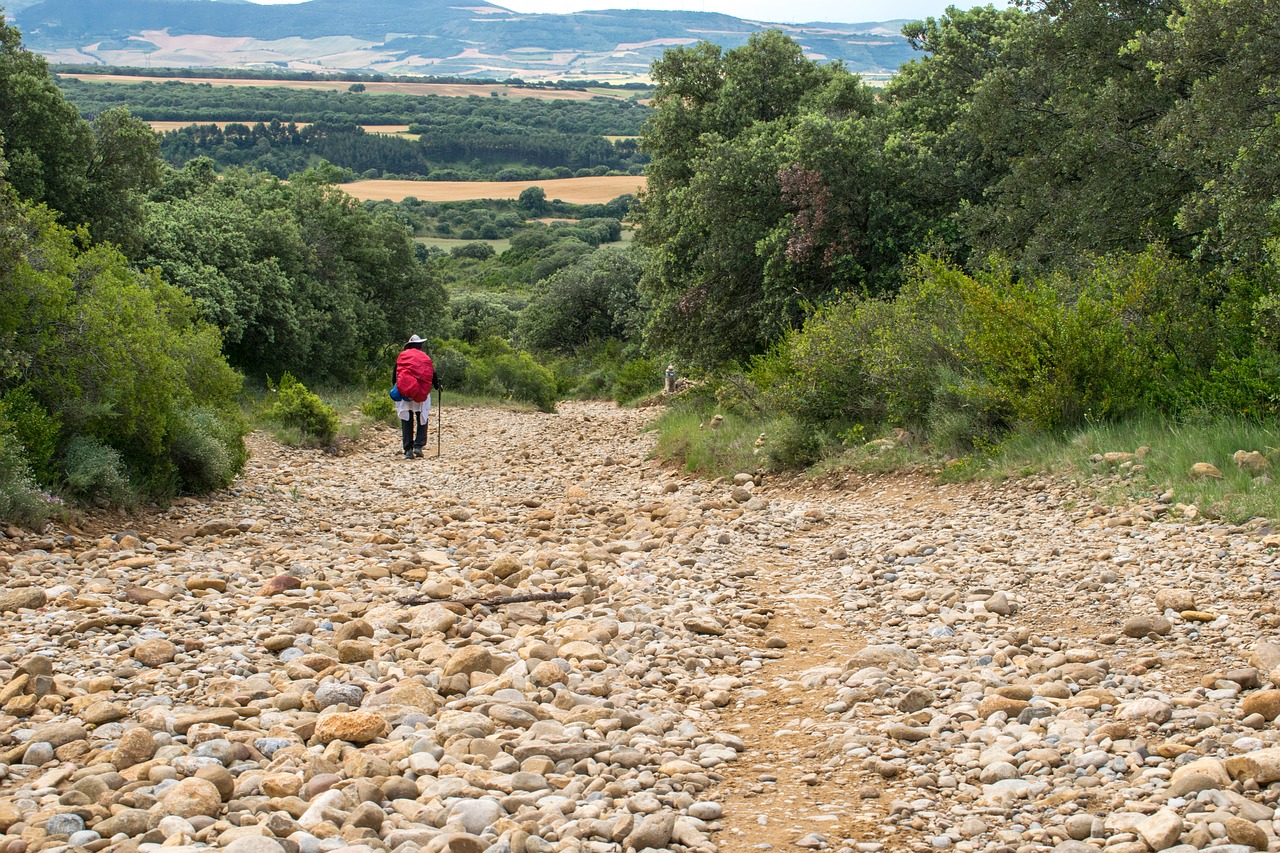As an Amazon Associate I earn from qualifying purchases.
When there is mention of backpacking trips, there are several states that must receive a mention and California is at the top of the list.
Specifically, the rugged and expansive coastline, coastal mountains, deserts, and damp forests give the state a significant amount of nature, and mouth water watering features making backpacking Northern California perfect.
An ideal backpacking trip must be away from the city and urbanization for a relaxing getaway.
Shop Related Products
Last update on 2024-12-28 / Affiliate links / Images from Amazon Product Advertising API
In the following write up we discuss some of the best backpacking trips in Northern California to make your total enjoyment.
Best Backpacking Trips Northern California
As mentioned, California is a backpacking paradise that will get your adventure juices running. We wrote another article on backpacking Southern California listing other great locations for backpacking. Below are other trips in the north of the state you can take and make your adventure complete.
1. Etna Mountain Hike
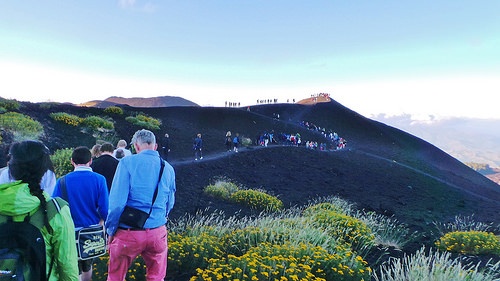
The Mount Etna summit is among the ideal spots for viewing the sunrises and sunsets. And if you are hiking during those hot summer days, the Upper Ruffey Lake is more than adequate to provide a cool off.
The Pacific Crest Trail is easy to take and includes a steady uphill climb for a few miles before a decent to the lake. The water is calm and provides a refreshing break from the heat. It is also an excellent spot to have lunch before the trip to the Etna mountain summit, noticeable ahead of you.
However, you will not find a trail to the top and will require some refined navigation skills.
You will have to contend with some bushes for a significant portion of the climb, and so some good boots or shoes will come in handy.
Shop Related Products
Last update on 2024-12-28 / Affiliate links / Images from Amazon Product Advertising API
But once you arrive at the summit, it’s all sitting back and relax as you watch the sunrise and sunset beside a warm campfire.
2. Mt. Shasta Climb

The Clear Creek Trailhead is the most straightforward route to take for this backpacking trip. But still, there are reports of deaths from falling rocks and mountain climbing skills will come in handy.
Pick your climbing permit from the trailhead and human waste bags. There are clearings in the expansive forest to provide sufficient view of your primary goal. The roars of the Mud Creek falls greet hikers along the way and may be soothing.
This trail is straightforward and takes you to the Clear Creek Meadow at 8,500 feet – an ideal camping site if you are looking to make it a two-day hike. There are some tent clearings, and you can set camp to enjoy the beautiful sunset and Mt Lassen and Klamath Mountains – all from this spot.
What then follows is a challenging climb to the summit as you contend with snow. You can take momentary rests to view the beautiful landscape stretching across the horizon – the Shastarama is to the South.
The ‘Mushroom Rock,’ should be your objective and will indicate that you are making progress with only 1300ft to the summit – the ultimate goal. The summit crater holds together several climbing routes, but it is ideal to take the south path.
From here, you will begin to experience signs of reduced oxygen such as headaches, lightheadedness, and shortness of breath. Be prepared to take the necessary measures if the symptoms worsen.
The final climb can be a busy place but don’t be in a hurry to keep up. Take some time to experience the view of Northern California and take a few photos while at it. You can then return to your camp and stay for another night as you savor the moment.
You will need a large pack to carry all the necessary supplies for the hike.
Others include crampons, extra water, helmet, ice ax, extra food to take you through the days you will be camping and of course warm clothing. A tent, sleeping pad and stove will all come in handy depending on your objective and needs.
3. Plumas National Forest

This trip has numerous trails that let you enjoy the Cascade and Sierra Nevada ranges.
It is a dog-friendly backpacking Northern California trip if you want to enjoy the country with your pet. This is where you will see the Bucks Lake Wilderness, but that does not mean it is all dry throughout the trip.
The trail will lead to a beautiful glacial lake listed as a fishing destination. It is a no boating and no swimming lake as it supplies drinking water to the surrounding cabins.
Thomson Lake is just next to Buck Lake, and this makes it a rich site for beautiful scenes.
The Bucks Lake Wilderness has a wide selection of vegetation and topography to see and enjoy – quite a relief from the city life. You will come across conifer stands, pure red fir and oak stand among other vegetation.
You will not require a permit for this section of the Plumas National Forest but register at the trailhead.
4. Sky High Lakes Hike
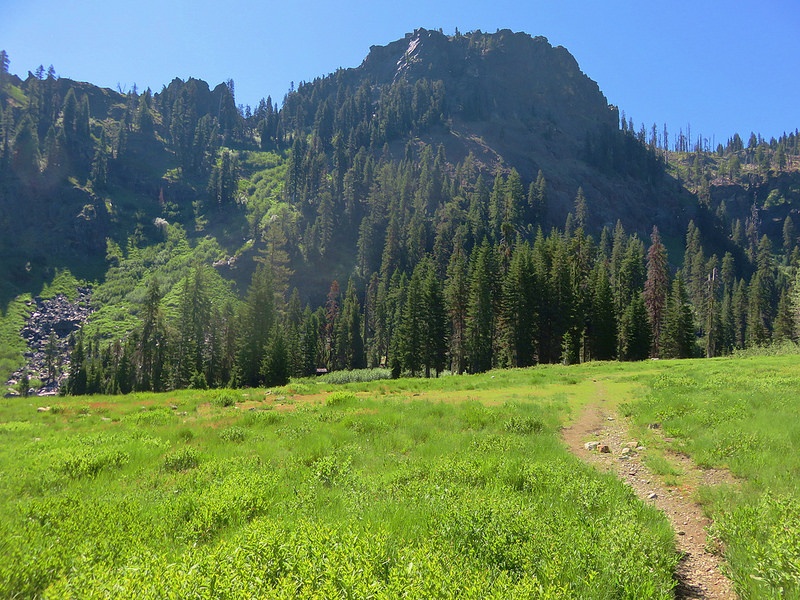
For those planning a multi-day hike, this Marble Mountain trek is among the most ideal. Its glimmering rocks and Sky High Lake basin make it an enjoyable trip for you to take – quite magnificent scenery.
The trail takes you along Canyon Creek and is quite audible.
You move up 3.9 miles in the conifer forest until you come to a fork.
There, you will encounter several trails but take a left for the Sky High Lakes Basin which is just 2 miles out.
You can set camp by the lakes and head out in the following day allowing you to be ready for the adventure that awaits you. At about half a mile, the trail goes to the imposing Marble Rim meadow. The south route takes you to a four-pronged junction and lead.
This provides you with additional exploration opportunities. In other words, you can access the whole Marble Rim from this spot. However, the objective, for now, is the Sky High Lakes.
Following the loop southwards for about half a mile lands you in another junction. Turn left to climb before going for the descent to the Sky High Lakes basin. This area is ideal for camping and can serve as a base for further exploration of the area.
The Shadow Lake lies to the right of the last fork and high above the Sky High Basin. What you may find impressive is the role it plays as a reflecting pool for the features above – makes it even more interesting.
Other sites you will find exciting include the caves, but it takes some a little bit of work to see them.
Some of the items you will need for this hike include a bag and rope to hang food away from the nosy bears, hiking boots, food, sleeping bag, hammock, layers to keep the cold off, maps and water.
5. Carson-Iceberg Wilderness
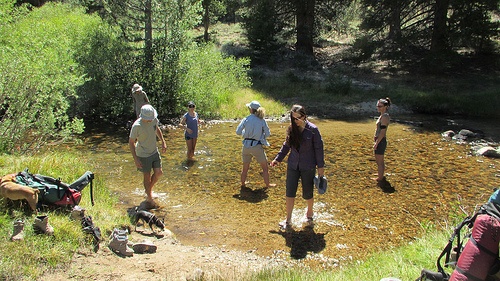
This is one, often overlooked backpacking spot by visitors heading for the Yosemite trails.
Packed with more than 200 miles of trails, this track is ideal for family backpacking Northern California. It is also perfect for those searching for a bit of solitude after a full-packed schedule during the week.
The pine forests will be the perfect source of solitude after a whole week of running up and down. There is no share-system in place, and so you can just walk up and make a reservation any time of the year.
But you will require a wilderness permit from the rangers.
On the east side, there are several isolated lakes, giant trees and riparian vegetation all working together to provide a high dosage of nature. This is also the only place you will find the Paiute Cutthroat Trout making the trip all worthwhile.
And unlike the Yosemite trails, Carson-Iceberg Wilderness has low human traffic and which is a good thing. Some of us love places with fewer people and has a lot to see.
You will need to pack some food and water as it is not a short backpacking trip. It is also one of the ideal 3-day backpacking trips California you will find. Remember to pick your map at the forest service station.
6. Desolation Wilderness – Susie Lake
Susie Lake is a great site surrounded by coves, cliffs, granite boulders, and vegetation. The lake links to other close-by lakes making it an exciting canoeing location.
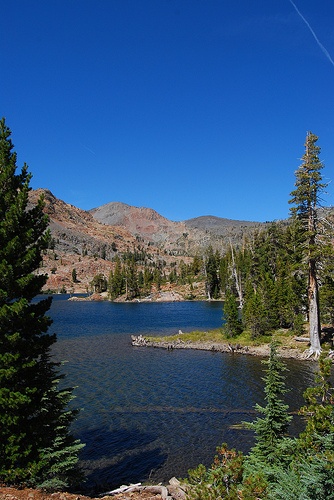
The best access to this trail is Glen Alpine.
To get started, go towards Fallen Leaf Lake and use the Fallen Leaf Rd. Go straight until you come to the small firehouse – it will be on the left of the road. You will locate the trailhead on the right of this firehouse.
The first mile of the trail is all forested, and so you have enough shade for the trek. You will get to see the Glen Alpine Springs site just before you begin the ascent.
You will then scale for about a mile before you start seeing incredible mountain views – you can take a few pictures to show your friends all the fun you had.
This trail leads to a junction leading to either Susie or Gilmore Lake. Susie is on the left, and your destination is approximately a mile from this spot. The total hike is about 7.6 miles and is adequate as a summer or weekend getaway.
The must-haves for this trip include a first aid kit, a good map, sleeping bag, tent, warm clothes, headlamp, sunscreen, trowel, and of course, backpack. You can bring a raingear and camera if you want.
You will need an overnight permit and rangers check them quite often. If you are thinking of going as a group, the maximum number is 12. Water gets low towards the end of August and may require carrying your own.
7. Redwood National and State Park
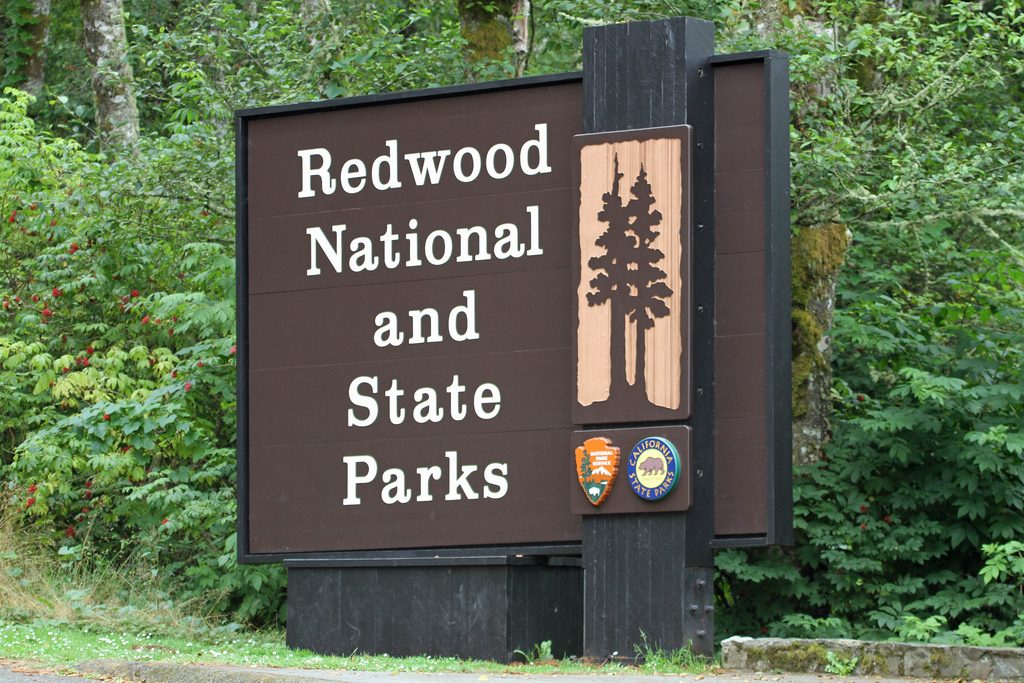
It may not be as famous as Yosemite, but this location has a fair share of its sites and most notably, the coastal redwoods.
This backpacking trip is strictly for those who want to see some of the tallest trees and some fantastic sunsets. The good thing about this trip is that you can plan it on a span of four camping days.
Before embarking on the trip, you will first have to check with the rangers.
And if everything pans out great, drive as far as you can towards the camp where the river pours into the ocean. If that’s not ideal for you, then there are numerous camping sites along the Tall Trees Grove route.
You will require picking a permit at the Thomas H. Kuchel visitors’ center to access the dirt road leading to the Tall Trees Grove. It is 45 minutes’ drive to the parking lot, and you will find bathrooms at the trailhead.
The groves are about half a mile out, but you can delay to take in all the beauty along the way. And if you want to camp at Redwood Creek, you will need to take a 15 minutes’ walk, away from the site. It is an excellent spot for the nighttime photos especially for those that love them.
You will need water shoes to explore the creek efficiently and after which you are free to take the Emerald Ridge Trailhead in your left for more interesting sites.
Practice some leave-no-trace ethics by leaving the place clean and the fires buried.
Some of the items that you will need to make your trip worthwhile include a bathing suit, some hiking boots, water shoes, tent, sunscreen, sleeping bag and pad, water and headlamp.
8. Yosemite National Park
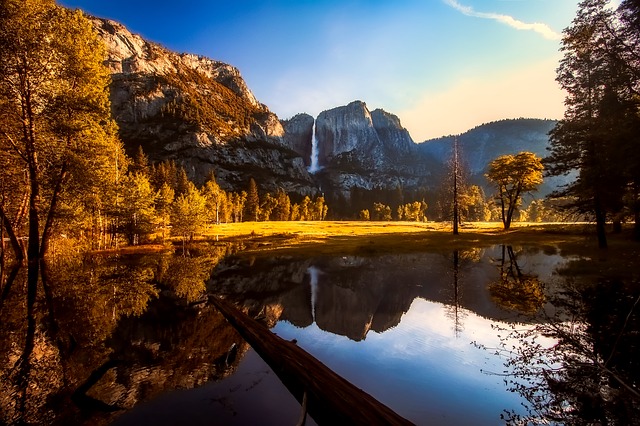
This is one of the most popular backpacking spots, and so expect a considerable amount of jam and people. The majority of Yosemite area is wilderness, and its popularity may be a mystery for those unfamiliar with the place. There are no backpacking restrictions as long as you abide by the rules.
Yosemite is home to alpine lakes, rushing waterfalls, rock formations, and redwood which all combine to make the site ideal for backpacking.
However, you will require a free permit to see all this and relax while you watch the sun gradually retire for the day. The permits are on a first-come-first-served basis.
There are various trails, and you will have to specify the particular one you plan on taking and where your camp will be. Among the famous trails include the half dome hike.
The half dome hike is strictly for day hikers and will require a predawn start – this is a 10 to 12-hour hike and so not for the soft. Most half dome hikers prefer the Tuolumne Meadows trail. You can pass through the Cloud’s Rest for a hair-raising experience as you ascend the 9931 feet.
A big plus of this trail is the low human traffic allowing for total enjoyment of the trip.
9. Ventana Wilderness – The Pine Ridge Trail
Another excellent backpacking idea is the 10-mile Sykes Hot Springs trek.
The trip starts at Pfeiffer Big Sur State Park campgrounds and to tell you the truth; it is not an easy one. It is a bit challenging during winter and spring when the water is running fast.
In the last half mile, you will have to contend with rocks on your way to the hot springs. Campfires not allowed anywhere within the campgrounds during the summer months. And you have access to one toilet during your trip.
The ideal time for the trip is during the offseason. But you will also need to get onboard as early as possible.
You will need to have waterproof hiking boots, water, tent and sleeping bag. You can also bring some snacks to keep your energy levels up during the trip. And if you plan on having freshly cooked stake beside the springs, remember to get a permit for it and have it with you – saves you a lot of trouble.
10. Kings Peak Backpacking
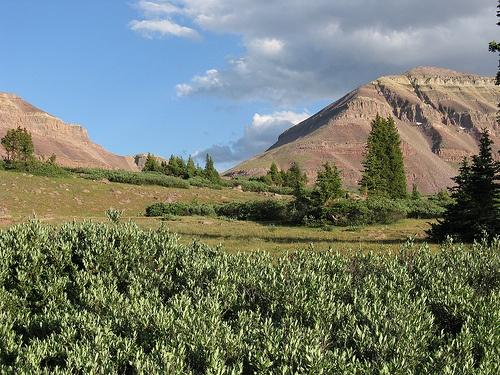
King’s Peak provides a spectacular view in every direction. From the 4000ft elevation, foggy valleys, beaches, and canyons are visible. It is to the south of Eureka and is 75 miles away. The Pacific Ocean is just three miles away.
King Peak is among the most dominant features in the state formed as a result of the tectonic action. The area collects a generous amount of rainfall between October and April and so is pretty green – a welcome relief from the city life.
There are several routes you can take to King’s Peak with the lightning trail being the shortest.
It is only 2.5 miles long, and you can access it through the King’s Peak gravel road as you are heading towards Shelter Cove. You will pass maple camp on your way to the peak
Most people prefer the spectacular Lost Coast trail along the shore. Taking this trail will give you about 4000ft of elevation. But for this trip, let’s concentrate on lightening trail for a change.
The path goes up to King Range crest and has about 2000ft gain.
However, keep in mind that the trail is quite remote but relaxing and visually satisfying. You will also get to see the very green Humboldt County and other agricultural areas.
For this trail, decent walking shoes will come in handy.
Carry your own food, water, beer, proper clothing depending on the weather and the necessary permits – stoves and campfire permits. You will also need a tent, and of course, a map to navigate the area with much ease.
11. Henry Coe State Park
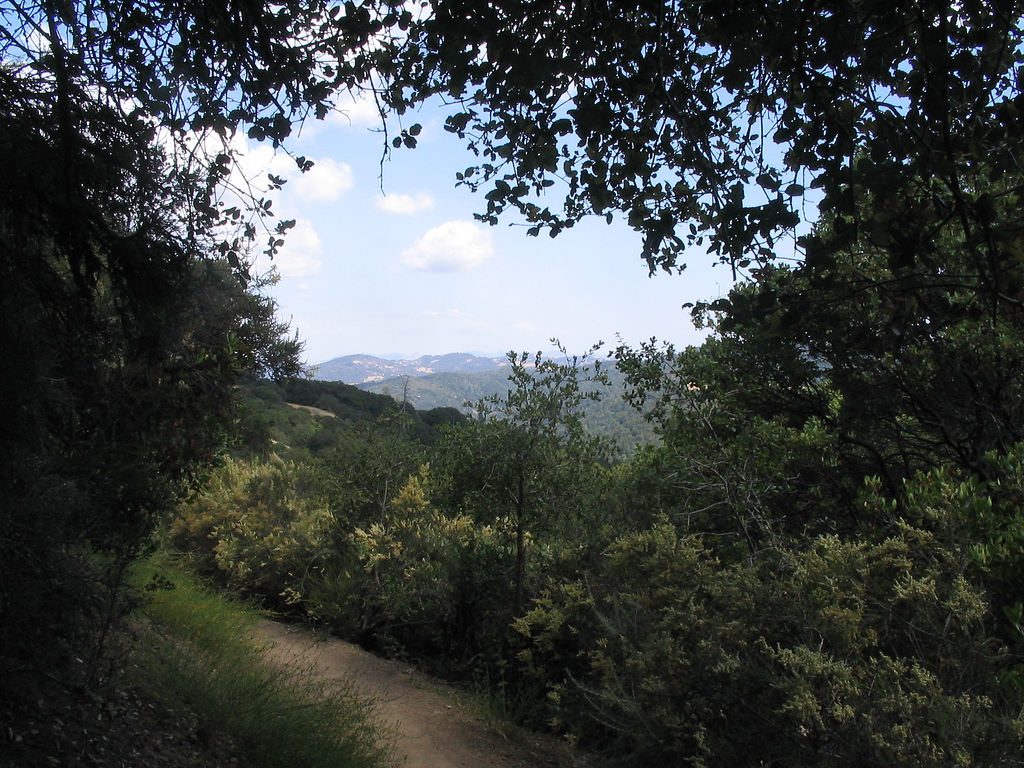
This is one of the ideal sites for those looking to backpack.
You can effortlessly plan a ten-day trip without much ado and camp at a different place every day. The sites are all spread out within the 20-mile radius from the headquarters.
The trip has tons of sites and permits issued on a first-come-first-served basis. You should not worry about getting turned away. The designated sites are on the western side of the park. But you are free to camp anywhere in the eastern zone.
You can start the backpacking at Skeel’s Meadow and take the monument trail packed with wildflowers and trees. It is about half a mile to the Hobbs Road which intersects with the Middle Ridge Trail before descending steeply towards Coyote Creek. You then take a right towards Skeel’s meadow and reach your destination.
The peaceful wildflower meadow makes a perfect site for a picnic and resting.
The creek is just across the meadow, and here you can get some water on your face to cool off any summer heat that may be wearing you down.
You can hear some frogs as they make comforting choruses at night – nature always has this effect.
One pro tip to make this trip more natural for you is to talk to the park staff before you start the hike. You will get useful info regarding the different trails that you cannot get anywhere else.
12. Six Rivers National Forest – Devil’s Punchbowl
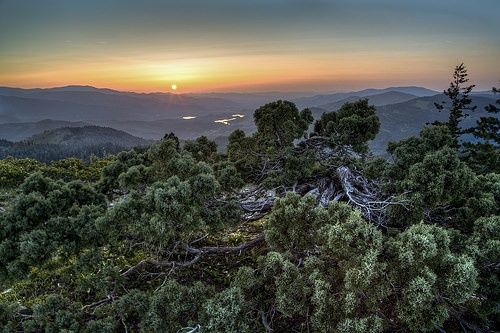
The largest and most rugged mountains among the Klamath Mountain range are the Siskiyou Mountains. The Siskiyou wilderness is approximately 182,802 acres and includes three national forests: Six rivers, Siskiyou and Klamath.
This area experienced minimal glaciation which as a result makes it considerably bio-diverse. The Devil’s Punchbowl emerged from the few glaciers and is one of the ideal backpacking sites. The crystal-clear water lake is at the foot of one the highest peaks in the area – the Bear Mountain.
You can access the Doe Flat Trailhead at the Smith River National Recreation Area.
The trail gives you the necessary shade, and you feel the sweet breeze as you scale the path. The recommended time to take the trail is during summer, but that does not mean you cannot take it in late fall.
The Punchbowl may be the destination for many hikers, but the Siskiyou Range diversity is what indeed makes the trail one of the best.
The trail flaunts a range of wildflowers including the pink cliff maids, red Castilleja, and blue penstemon. The sweet smell of the native western azaleas will greet the early summer hikers making the trip genuinely satisfying.
What makes this area truly impressive is the range of conifers you encounter along the way. There is also a unique collection of them including the rare Brewers Spruce within the Klamath Mountains. The trail also boasts maples and oaks that grace the track with beauty and aroma – these are within the first mile of the trail.
Buck Lake is 2.5 miles down the trail and is an excellent place to set up camp.
There are many fishing opportunities, and a fishing backpack will come in handy. The junction for the Punchbowl is at 3.3 miles. Turning right takes you to a number of steep switchbacks and demands a little bit more caution – they tend to retain snowpack even during the summer.
Devil’s Punchbowl lies on the eastern side of the trail and beyond the first small lake. Pitch a tent and reward yourself with a refreshing swim as you enjoy the site of the glacier lilies and cliff maid flowers surrounding the mid-sized lake.
The Preston Peak is clearly visible from this spot and can take a few snaps of it from here.
There are not many campsites around Punchbowl, and so it is always advisable to arrive early and book your spot. Restrictions on making campfires are in place and abide by them.
13. The Lost Coast Backpacking
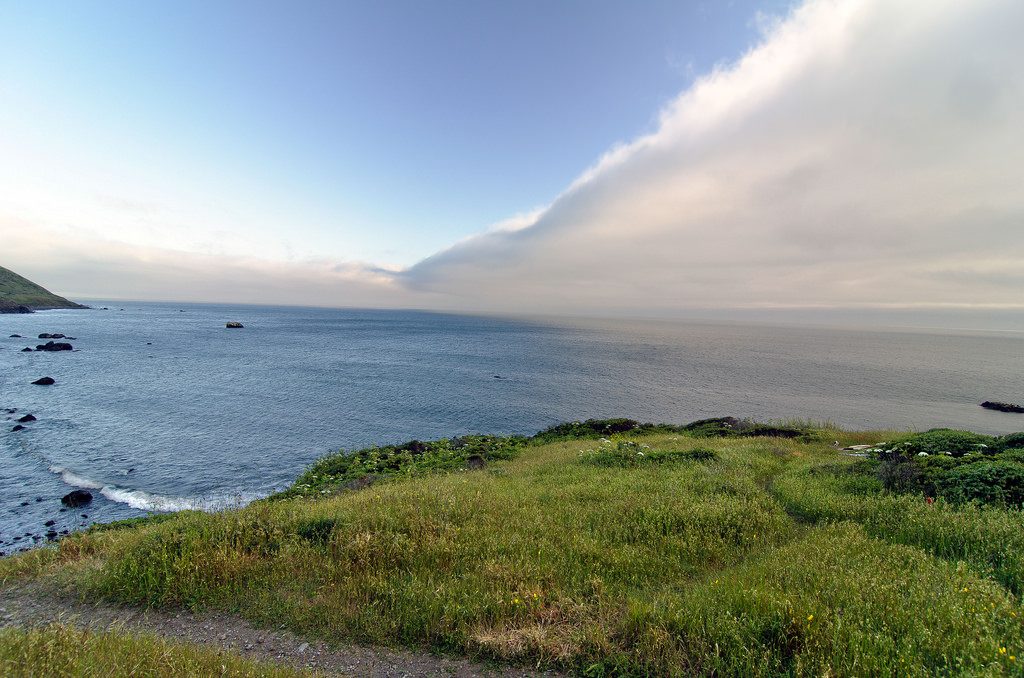
This is one exciting hike with excellent coastal views over a 24-mile stretch. You can either make use of your car or shuttle service to the trailhead.
It is a one and half hour drive from Shelter Cove Trailhead and Mattole.
It is among the most rugged of places and is quite remote in comparison to the other areas in the state. The trail lies between the sea and cliffs and takes you through a desolate landscape. But apart from that, the trip is a source of pure solitude.
The trail is steadily growing in popularity, but that does not mean that there is a high human traffic route. As a matter of fact, this is not one easy trip as there are creek crossings, wind exposure, sneaker waves and poison oaks. You may have to look out for black bears and rattlesnakes.
There are numerous camping sites you can choose from and get a clearer picture of the same from the map. Choose your route well, and you will not have to contend with challenging routes occasionally vanishing under high tide.
Check the weather reports and tide charts just to be sure.
Some of the things you will need for this trip include a stove, sufficient meal for three days, water bottle, hiking clothes, hiking boots, a pack, a good map, a tent and sleeping pad, sunscreen and beer canister among others.
14. Emerald and Sapphire Lakes
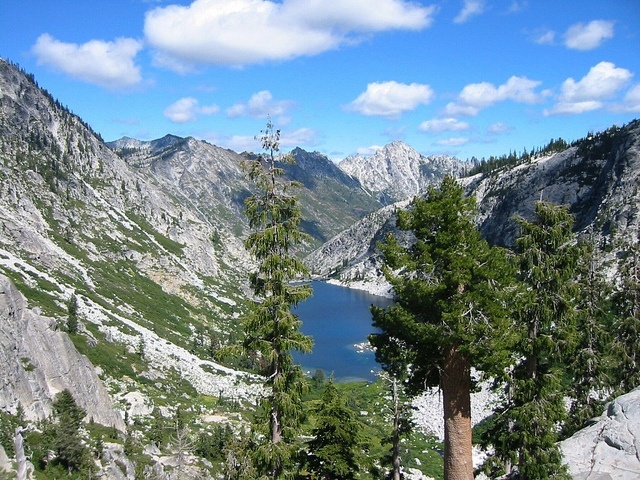
The lakes are the center of Trinity Alps and are between granite ridges. These water bodies are thankfully responsible for Stuart Fork Creek draining into Trinity Lake.
There is lots of wildlife to see at Stuart Fork including the Black Bear and deer.
Rattlesnakes are also a common thing, but you don’t need to worry. They are pretty non-aggressive and avoid a human encounter at all costs – a good thing for you, to say the least.
Human intervention at Emerald and Sapphire Lakes is quite apparent. You will see reinforced steel and granite boulders as the main components for dams that once provided water to one of the largest hydraulic mines in the state.
The amount of gold extracted from this mine is worth millions.
The rising labor and steel costs brought the mine to a halt, but it now serves as an excellent feature to see, thankfully. Other exciting things to see on the trail include the pristine watershed.
From the Trinity Alps Resort, the trail takes you through an old road to Cherry Flat before ascending Stuart Fork. You leave the river behind as you scale the east bank but water is in plenty from streams and tributaries as you move along.
At clocking 4.5 miles, you will find an ideal camping spot at Oak Flat.
But before Oak Flat, there is a nice-looking swimming hole that you can jump into to wash away the dirt and sweat. At 8 miles is Deer Creek junction but move on to Morris Meadow which is just a mile away.
The meadow boasts a variety of wildflowers including lupine, paintbrush, and Yarrow among others. At the far end is a small forest of pine and cedar.
The next decent camping site is 12 miles from the beginning of the trail at Portuguese Camp. The last mile of the Stuart Fork trail is steep, open and rocky.
You will get the brunt of heat on a sunny day.
But let not that blind from enjoying the beautiful features that lay across before moving ahead. Sapphire Lake is just north of Emerald.
You will need sturdy footwear, water and food for about five days, fishing pole, water filter, headlamp, food storage that is bear-proof and cookware. A tent and sleeping bag are necessary.
15. Pat Springs Backpacking

This trip provides the best opportunity to view the Big Sur and San Lucia mountains. Pat Springs is an island of beauty surrounded by Ventana wilderness.
To reach your objective, you will need to take the trail from Bottchers Gap and move along Skinners Ridge.
The hike is not among the most challenging and a beginner can easily take – it is approximately eight miles with plenty of trees, vistas, fields, and summits to see.
Ideally, you should use Pat Springs as your base to explore the surrounding areas. A good idea is the Ventana Double Cone summit that even though rugged, offers a beautiful 360-degree view.
Conclusion
California has some of the best backpacking trips in the country.
Backpacking Northern California is quite satisfying and exciting. And depending on preference and skill level, you can choose the most appropriate site among the many.
A successful backpacking trip is all about proper planning and preparedness.
Carry all the necessary supplies and learn all you can about the trail you plan on taking, and your hike will not turn out a nightmare.
See Also:
- 15 Best Backpacking Trips in San Diego
- Best Hiking Backpacks Under $100
- 13 Overnight Backpacking Trips in Southern California
- Best Sling Backpacks for Travel
Amazon and the Amazon logo are trademarks of Amazon.com, Inc, or its affiliates.



